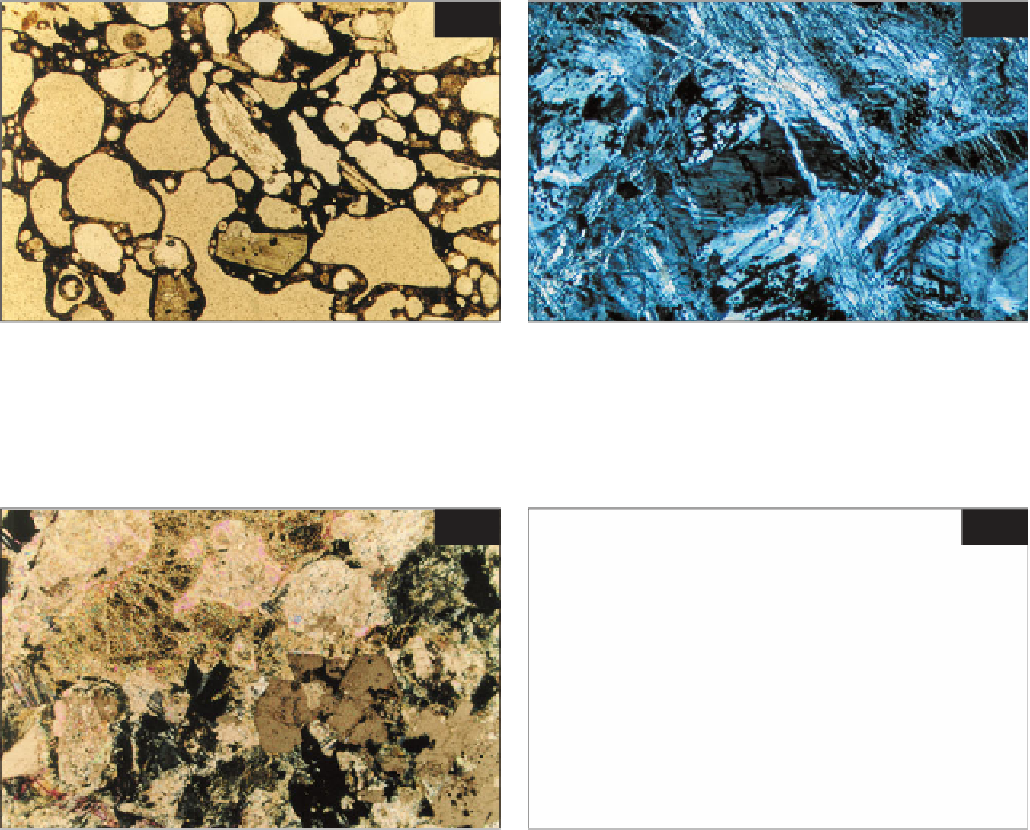Geoscience Reference
In-Depth Information
coloured. Fresh ultrabasic rocks such as peridotite are
little used in building. However, certain types of altered
ultrabasic rocks are used as decorative stone. The
alteration process known as serpentinization alters
ferromagnesian minerals to the mineral serpentine, and
extensively serpentinized rocks are termed serpentinite
(
38, 39
). These best known varieties are green coloured
(often called 'Verde') and may have a mottled
appearance. Serpentinites take a polish well but are
relatively soft, so they are most suitable for decorative
panels or carving. Altered ultrabasic rocks may contain
asbestos, which makes them a potential health hazard
(
40
). The asbestos is usually well bound into the stone
and usually represents no danger in-service. However,
the possibility of asbestos fibres being released should
be considered for stone processing and building
demolition.
37
38
37
Basaltic scoria showing characteristic vesicular
texture (from Mount Etna, Sicily); PPT, ×35.
38
Serpentinite consisting wholly of the mineral
serpentine (from Cyprus); XPT, ×25.
39
40
39
'Polyphant Stone' from Cornwall, England. A
serpentinized picrite consisting of talc (pink),
serpentine (dark blue/grey/green), and carbonate
minerals (light brown); XPT, ×35.
40
Serpentinite (Cyprus) exhibiting a vein of chrysotile
(white asbestos, fibrous, brightly coloured). Serpentine
appears grey; XPT, ×150.





